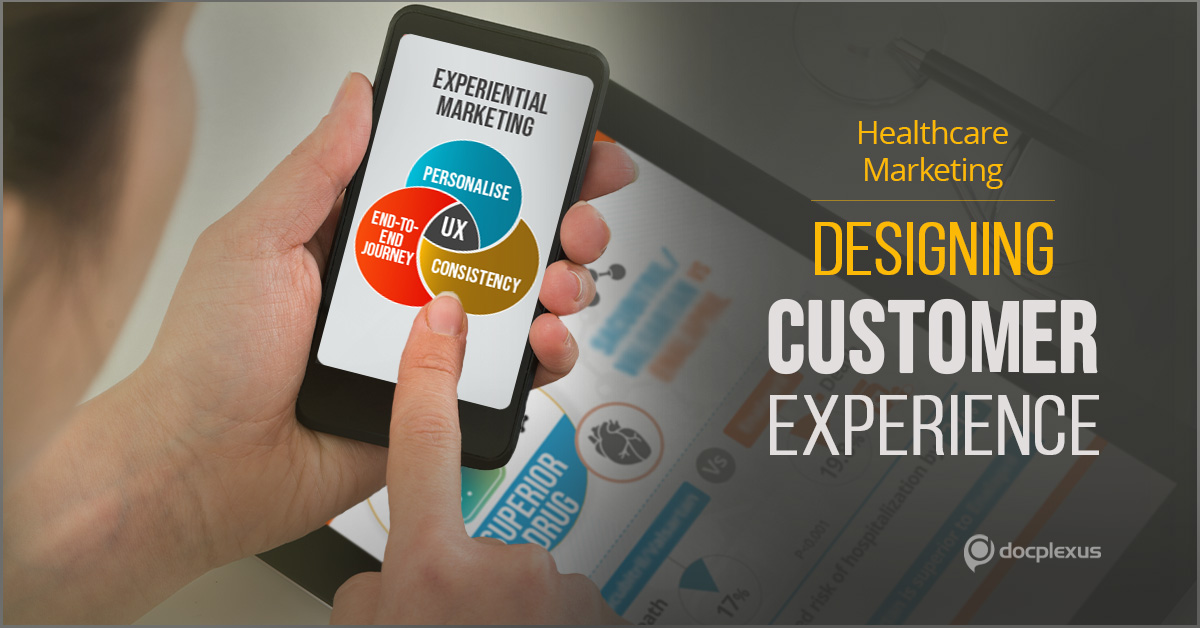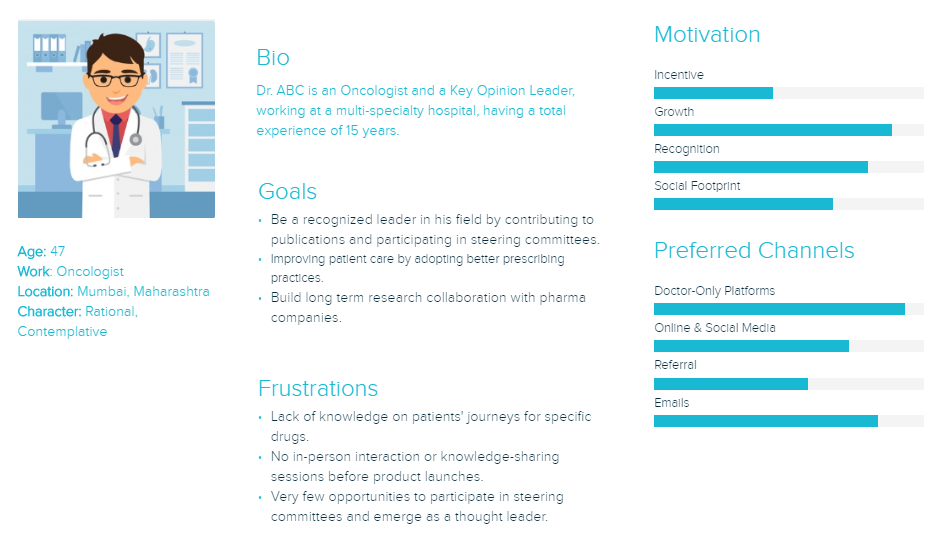
Steve Jobs once said, “You’ve got to start with the customer experience and work back toward the technology, not the other way around”. Just observe any pharmaceutical product launch of current times (or from the past). They mostly focus on the efficacy, safety, and quality of new drugs, and the issues pertaining to customer journey/satisfaction are taken up only after the event.
But is it the right strategy to undercut customer experience (CX) or customer-centricity in the lead up to product launches?
It isn’t anymore.
Should Healthcare companies value their customers’ emotional and clinical needs more than the product itself?
They should, but it will require a 360 degree approach towards product launches.
Leading companies start designing customer journeys 12 to 18 months before their product launch. The idea is to cover all the fundamentals and yet create unique customer journeys to engage with HCPs/Patients before, during, and after the launch. They assess the local markets on parameters like regulatory environment, maturity, and gaps, to understand customers’ preferences. But instead of designing ‘n’ number of customer journeys (for ‘n’ number of prescribers/patients), they design a few end-to-end journeys (based on a few customer personas) and tweak them as per their requirements.
For example, a prescriber’s journey may comprise of:
Step 1 – In-person interactions with Medical Science Liaisons at the beginning,
Step 2 – Sending an event invite (of a webinar on the upcoming launch) a day after the in-person interaction.
Step 3 – Sharing Infographics, Research Snapshots, and PPTs related to the drug a few days before the launch.
To understand why customer satisfaction matters so much in the pharmaceutical industry, McKinsey & Company did a study involving 600 immunologists from Europe and the USA. The results are shown in the image below. It is quite clear that prescribers are twice more likely to prescribe a particular drug if they are fully satisfied with their journey along with the pharmaceutical company’s contribution (in enhancing medical/scientific knowledge).

Focusing on individual touchpoints Vs. Focusing on end-to-end customer journeys
Some Healthcare companies try to improve their visibility or reachability by increasing the number of interactions or touchpoints rather than enhancing the experience of customers. Sales reps of such companies will wait for hours to meet the prescriber, just to increase their ‘interaction count’. But such interactions will be done only for the sake of doing it, without evoking any curiosity in the prescriber’s mind for the upcoming drug launch.
On the other hand, sales reps who are customer-focused will plan a comprehensive journey for the prescribers, linking them to various touchpoints.
For example, if a prescriber is apprehensive about a new biologic drug, then the rep can strike an initial discussion during the in-person visit. He can later invite the prescriber for a clinical webinar on the same drug (hosted on platforms like Docplexus), or share compelling Infographics, illustrating the drug’s clinical effectiveness for different patient profiles.
Perhaps, a week before the event, an email can be sent to the prescriber, followed by a reminder SMS (a couple of days before the pharmaceutical product launch). A coherent sequence like this can create a seamless, satisfying, and memorable experience.
Creating customer personas to understand HCPs better
The success of a customer experience design depends a lot on the accuracy of customer personas. A persona can be seen as the template customer (prescriber/HCP or patient) for a particular drug. For creating a successful persona, Healthcare companies can perform a quantitative segmentation analysis to understand key customer profiles. They can use ethnographic observation (understanding the habits and everyday life of HCPs), and other qualitative methods to chalk out their behavioral patterns, personal goals, pain points, and mood.
Read More: Learn about the psychographic segmentation of HCPs here.
They can create pre-launch education kits, video content (clinical webinars or KOL interviews), infographics, and so on. Well-documented visit plans can be given to HCPs a week before the pharmaceutical product launch, with hour-to-hour details of the scheduled meetings and activities.
The best part of creating customer personas is the integration of data and advanced analytics into every step of the design process, to gain actionable insights and reduce the quantum of risk. Modern research techniques and the availability of large data sets have made it possible to track even the anonymized histories of HCPs and patients.
At Docplexus, we do mindset analysis of our community members (HCPs from specific therapeutic areas) to create accurate and successful customer personas for our pharmaceutical clients. Our diverse user base of 3,80,000+ HCPs spanning 98 therapeutic areas and 1600 cities, gives us the edge over any other doctor-only platform.

Sample Customer Persona
Testing prototypes before the pharmaceutical product launch
For leading pharmaceutical companies, Customer Experience Designing is a collaborative process involving both patients and prescribers. When actual customers are part of the process, then ideas can be subjected to a reality check and turned into prototypes (a set of digital solutions).
Prototypes address the clinical, emotional, and technological needs of customers (prescribers and patients). After a series of test runs, prototypes can feature permanently in customer journeys for the new drug.
Example of a prototype
When a new therapeutic drug is about to get launched, the main challenge is to evoke curiosity among physicians and make them leave their old prescribing habits. At a macro level, strategic publication plans (journals/abstracts) can disseminate key information on the upcoming drug, covering its entire life cycle (from pre-launch to post-launch).
At a micro level, a meticulously designed poster/Infographic can be a useful prototype, depicting patients’ pathway for the new drug and encouraging physicians to adopt new prescribing habits, a few weeks before the launch.
A poster like this can help physicians understand patients’ concerns regarding the side-effects of a particular drug. Such concerns result in delayed treatment or drop-offs; therefore, if physicians can address them in the very beginning, then it can certainly improve patients’ journeys.
A digital, doctor-only platform like Docplexus can also be seen as a prototype, as it allows physicians to participate Live in clinical webinars, read patient cases, and develop a 360-degree understanding of specific drugs.
Conclusion
Pharmaceutical companies that are ahead of the curve no longer launch products but experiences. The early adopters will certainly get a head start, and the apprehensive ones are likely to be left behind. In times to come, customer experience designing will play a significant role in differentiating a successful pharmaceutical product launch from an unsuccessful one.
If you want to know more about Mindset Analysis solution or our exclusive digital channels to engage doctors in a personalized manner, you can reach us at: solutions@docplexus.net
Docplexus – Pharma’s Trusted Marketing Partner
Docplexus is the largest digital network of doctors in India & a trusted marketing partner of pharma & medical device companies. We empower our industry partners to meaningfully engage with the medical community through data-driven, evidence-based marketing & brand management solutions such as Infocenters, Mindset Analysis, KOL Webinars, Sponsored Medical Updates, and Online CMEs.
